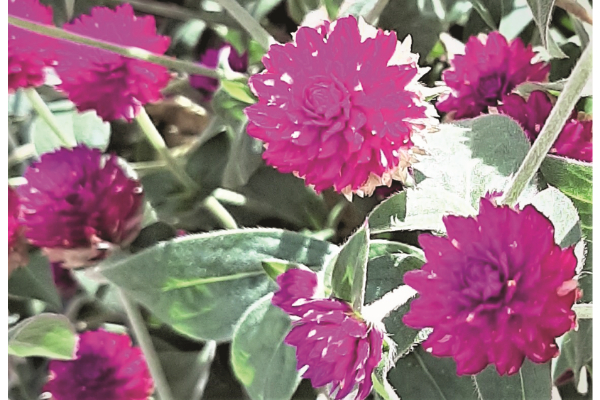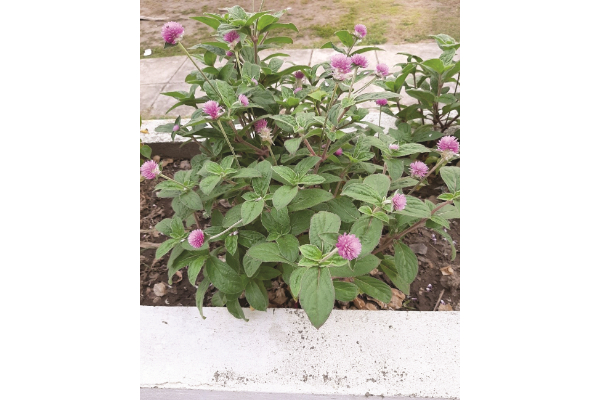

Immortal flowers
Published on: Sunday, August 22, 2021
By: Eskay Ong
Text Size:

The sad thing is that nothing can stop this natural cycle of events, although it is understood that there is in fact no permanence in the world including with both living and non-living things.
However, few are aware that immortals do exist, at least in the form of immortal flowers in gardening. Immortal flowers belong to a group of plants that are known as immortelles, or more commonly, the everlastings.
News of immortals should, hopefully, be able to bring back a few quick thrilling flashes of the movie Immortals, while at the same time, bringing much delight and joy for plant enthusiasts especially during this bleak and depressing wave of pandemic.
It goes without saying that sprightly and dainty flowers do perk up one’s mood and emotion especially during the morning hours, and as such, many would have wished for the lovely flowers and plants to stay on perpetually.
This is not surprising considering that most gardening enthusiasts have a sort of inborn aversion to having their gorgeous flowers fade away. The existence of everlastings would therefore come to be regarded as a welcome respite without the pressure of facing losses in terms of fading flowers or shrivelling plants.
The reality is that it is quite impossible to have the immortals that are truly everlasting in every sense of the word.
Ordinarily, seeds germinate, seedlings grow and develop into mature plants which than bloom, fruit and seed, and they then die off, and return to the earth.
Similarly, flowers open and bloom, and then fade and die off too. The loss of youth and beauty is part and parcel of life, which has to go on and continue into the next cycle.
With the immortelles, the plants and flowers die too, but due to the slight variation in the contents and structure of the cells, they tend to retain a high degree of hardiness in such structures as stems and stalks after drying up completely that they are able to extend their standing time without the flowers fading, drooping or dropping. This is amazing and is a real plus point for those out to maximise on the use of ornamentals.
On the one hand, many everlastings make good cut fresh flowers especially when they are harvested at 30-50pc open. From then to full opening may take another few days to a week or so, which for everlastings, may continue to be in the same condition for months on end although drying up in due course. At this stage, it is best to trim off the wet ends and keep the vase dry to add several more months of display life.
And on the other, cut everlasting flowers that are dry and attractive enough to make a good marketable product may fetch good solid ringgit which may allow the enthusiast to afford a lobster or kambing for dinner.
However, over long periods of time, everlasting flowers, unless preserved, may also collapse into a mound of dust. For instance, dried everlasting flowers normally collect a lot of dust, dirt and grime, and together with the organic contents of the flowers, these tend to attract a number of tiny insects and fungal infestations.
The systemic onslaught by such little pests ensures that immortelles are not normally kept for years as their deteriorating conditions do not permit their perpetual use.
Moreover, as dehydration of the floral parts progresses over a period of time, the flower heads and stalks become very brittle, and this may result in the parts breaking or snapping off easily unless handled gingerly.
Globe amaranth as an immortal
One of the most common flowering plants that can be used as an everlasting flower is the Globe Amaranth or Button Flower. Known botanically as Gomphrena globosa, the button flower is just about the most perfect plant to start delivering the everlastings into your home or office.
They come in a multitude of colours ranging from orange, purple, lilac, white, magenta, pink or red in oval or globe-shaped flower heads and membranous bracts that maintain the shape of the flowers when dried.
Notwithstanding the need for green fingers, I can assure you that the cultivation of such an ornamental is like breezing through a holiday of sun, sea, sand and song.
Belonging to the family Amaranthaceae, button flowers are native to Central America but has now spread all over the world. There are several hundred species of plants within this group, which includes the more widely seen ones such as Celosia spp. and Alternanthera spp.
The main characteristic of button flowers is the large numbers of globular flower heads with their straw-like textures of the fully developed blooms. The petal-like structures are spread out in a symmetrically radial manner which, when looked at from the top, yields a pattern of striking symmetry.
Another feature of the button flower is the profusion of tiny epidermal protrusions or hairs which occur all over the vegetative parts, much like trichomes in some other plants. The pubescent surface is seldom noticed as the micro structures are so tiny as to be largely invisible.
The most unique characteristic of button flowers is in their ability to produce great numbers of round to oval shaped flowers of all shades and colours. These little balls of colour are normally produced to be extremely showy, much like flowers of Vinca rosea.
The colourful flowers are most attractive if they are grown closely together in large planting beds or as footing plants for large trees of medium to sparse foliage, or even as border plants set in double or triple rows.
Cultivating button flowers
Button flowers are easy to cultivate and care for. In fact, old plants produce a lot of seeds which come in the form of tiny blackish to brownish specks. They are really tiny so much so that a couple of hundred of them can sit atop a five-sen coin. Just like bayam seeds, they are easy to extract by taking a few dry and mature balls of flower and then rubbing them somewhere for the seeds to show up.
The easiest way is to rub them between your palms so that the seeds are easily retained and these can be used immediately if the germination medium is ready.
The seeds germinate readily in a moist medium comprising sand and soil. Within a matter of a few days, the seedlings should appear above the soil surface, with a very high percentage of success.
Young plants may be grown in pots or polybags. They must be set in a rich soil mixture or else they will be spent very quickly. Button flowers are great consumers of soil nutrients, and as such, the soil in the pot should be regularly manured to ensure the continuation of healthy plant growth with luxuriant foliage and colourful flowers. If this not done, the plant may wear down very quickly, and in no time, the appearance would turn very scrawny and unhealthy.
Alternatively, button flowers may also be grown on the ground with a great deal of flexibility in its uses for landscaping.
The plant can be point-cultivated, set in planting beds or along boundaries as borders, or simply grown in a shapeless swath.
It can also be used in line plantings where the plants are set in rows to line a garden path or driveway, or simply to edge the planting beds of other varieties of plants.
However, the greatest advantage in the cultivation of button flowers is in its ability to adapt to a wide range of environmental conditions.
For instance, areas that are too wet for many herbaceous ornamentals should not be a problem for growing healthy button flowers, provided the soil is not waterlogged or too soggy.
Soils that are too dry for many plants should also be acceptable for button flowers because they are very hardy plants that can tolerate a high degree of water stress.
This should be a boon to many busy people as well as to landscape contractors in town who need to do less work but may hopefully still claim the full entitlement.
Button flowers are also able to tolerate very marginal soils, which would kill off many plants in town. This power of tolerance is of great advantage to both landscape implementing authorities and the contractors because, despite the use of poor and cheap grade topsoil as a result of poor or even non-existent supervision, such plants are still able grow and show something.
Maintenance wise, button flowers actually need very little in terms of watering, pruning and trimming, and fertilising.
A minimum amount of water such as those usually provided by natural rain, is sufficient to keep the plants going for a long time. Again, this represents a great saving, which means there is more cash to go around, and hopefully, to filter down to the low-pay labourers.
However, to obtain optimum results from the cultivation of button flowers, it is best to provide all that the plants need, and carry out maintenance works to keep them in top form.
Otherwise, what is the use of spending money to grow scrawny plants that wait for handouts in the form of rain from nature?

A large patch of button flower with thousands of purple and while blooms.

White button flowers.

Purple coloured flowers, are among the most commonly seen colours. Others may include orange, lilac, pink, red, magenta, purple etc.

Young shoots of button flower plants.

A white and dry head of flower is ready to release its seeds.

A small plot already with numerous flowers.
ADVERTISEMENT






